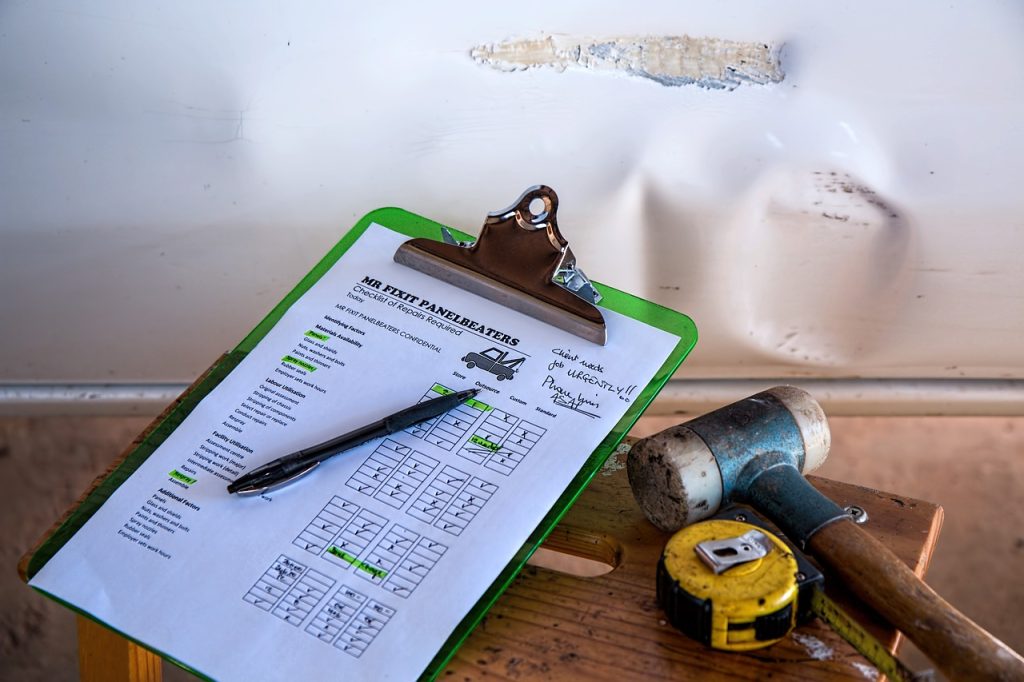Finding cheap car insurance is a universal desire, but the reality is more nuanced than simply snagging the lowest quote. This guide delves beyond the sticker price, empowering you to find car insurance that’s both affordable and truly protects you. Buckle up, and let’s master the art of finding the perfect policy!
Key Takeaways:
- Balanced Affordability: Look beyond the cheapest quote; prioritize finding affordable car insurance that adequately covers your needs.
- Insurer Reliability: Choose an insurer with strong financial stability for prompt claims processing and long-term reliability.
- Jargon Decoded: Understand key car insurance terms like premium, deductible, liability, comprehensive, and collision coverage to make informed decisions.
- Discounts Matter: Explore hidden savings through various discounts, such as good driver rewards, multiple car discounts, loyalty perks, and safety feature discounts.
- Strategic Policy Tailoring: Customize coverage based on your needs, regularly review and adapt policies, and consider the long-term benefits of loyalty or exploring new insurance options.

Beyond Price: What Exactly is Cheap Car Insurance?
Finding cheap car insurance is like finding the perfect pair of shoes: the cheapest option might feel good initially, but it could fall apart quickly and leave you stranded. True affordability in car insurance goes beyond just a low price tag; it’s about finding coverage that strikes the right balance between cost and adequacy. Here are some key factors to consider when defining “cheap” car insurance:
Coverage Adequacy:
- State Minimums vs. Comprehensive Protection: While state minimum liability coverage might seem cheap upfront, it only covers damage you cause to others. Remember, it won’t protect your own car in an accident, theft, or weather event. Opting for comprehensive and collision coverage offers peace of mind and financial protection, but naturally comes at a higher cost.
- Understanding Coverage Limits: Even within comprehensive and collision coverage, there are limits per incident and coverage caps. Consider your car’s value, potential repair costs, and medical expenses you might incur in an accident to choose appropriate limits. Going too low to save a few bucks could leave you significantly exposed financially.
Financial Strength of the Insurer:
- Peace of Mind in Claims: Imagine getting into an accident, only to discover your “cheap” insurer struggles to pay claims or drags the process out for months. Choosing an insurer with a strong financial rating from organizations like A.M. Best ensures they have the resources to fulfill their obligations when you need them most.
- Long-Term Stability: A financially shaky insurer might offer low rates today, but could face financial difficulties in the future, potentially impacting your coverage or even leaving you without insurance altogether.
Claim Service Reputation:
- Beyond Just Paying Out: The claims process can be stressful, and a responsive, efficient insurer can make a world of difference. Research an insurer’s reputation for handling claims fairly, promptly, and with good communication. Look for online reviews, complaint data from organizations like the National Association of Insurance Commissioners (NAIC), and industry awards or recognition for exceptional claims service.
True affordability means striking a balance between cost and value. Cheap premiums that leave you inadequately covered or struggling with a cumbersome claims process ultimately cost you more in the long run. Invest in the right coverage and choose a reputable insurer to ensure you’re truly protected, not just paying the minimum to get by.
Unpacking the Jargon: Understanding Key Car Insurance Terms
Navigating the world of car insurance can feel like deciphering a foreign language. Here’s a breakdown of key terms:
- Premium: Think of this as your monthly car insurance rent. It’s the amount you pay periodically to maintain your coverage. Remember, lower premiums often come with higher deductibles (more on that later!).
- Deductible: Imagine hitting a pothole and needing repairs. Your deductible is the amount you pay out of pocket before your insurance kicks in. Choosing a higher deductible lowers your premium, but ensure you have that amount readily available when needed. Consider it a financial buffer for covered repairs.
- Liability Coverage: This acts as your financial superhero, protecting you from being held responsible for injuries or property damage you cause to others in an accident. State minimums are mandatory, but consider higher limits for greater peace of mind. Imagine the stress of a lawsuit for medical bills after a minor fender bender – yikes!
- Comprehensive Coverage: Picture your car getting struck by lightning (highly unlikely, but possible!). Comprehensive coverage protects your car from non-collision events like theft, vandalism, weather damage, and even animal encounters (goodbye, rogue squirrel!). Remember, it goes beyond just accidents.
- Collision Coverage: This shields your car from financial harm in an accident, regardless of who’s at fault. Think of it as a knight in shining armor for your vehicle, guarding against bumps, scrapes, and even major collisions.
Beyond the Basics
- Medical Payments or Personal Injury Protection (PIP): This covers medical expenses for you and your passengers, regardless of fault, in some states. Consider it an extra layer of protection for unexpected medical bills after an accident.
- Uninsured/Underinsured Motorist Coverage: Imagine encountering a driver with no insurance (uninsured) or insufficient coverage (underinsured). This coverage protects you financially if they cause an accident. It’s like a safety net against irresponsible drivers on the road.
- Gap Coverage: Say your car gets totaled, but its value has depreciated since you bought it. Gap coverage bridges the gap between your car’s current value and the amount owed on your loan, preventing you from being stuck paying the difference. Think of it as a financial parachute in case of a total loss.
Understanding these terms empowers you to ask informed questions, compare policies effectively, and choose the coverage that truly fits your needs and budget. Don’t be afraid to seek clarification from your insurance agent – they’re there to help you navigate the jargon jungle and find the cheapest car insurance fit!

Demystifying Discounts: Unlocking Hidden Savings Opportunities
Discounts can significantly reduce your premium. Explore these possibilities:
- Good Driver: Reward for maintaining a clean driving record (accident-free and ticket-free).
- Multiple Car: Discounts for insuring multiple vehicles with the same company.
- Loyalty: Some insurers reward long-term customers with reduced rates.
- Student: Discounts for good grades or being a full-time student.
- Safety Features: Discounts for cars equipped with anti-theft devices, airbags, or other safety features.
- Defensive Driving Courses: Completing a recognized course can lower your premium.
Strategies for Success:
Shop Like a Pro: Comparing Quotes and Finding the Best Deals
Don’t settle for the first quote! Comparison is key:
- Get cheap car insurance quotes from multiple insurers: Utilize online comparison tools and independent agents who can access various companies.
- Compare apples to apples: Ensure quotes cover the same level of coverage and limits.
- Beware of hidden fees: Read quotes carefully to understand all costs involved.
- Avoid online scams: Stick to reputable insurers and be wary of unsolicited offers.
Tailoring Your Coverage: Optimizing for Affordability and Needs
Finding the right balance between coverage and cost is crucial:
1. Assess Your Needs:
Don’t fall victim to a one-size-fits-all approach. Consider these factors:
- Car Value: Is your car a vintage treasure or a daily commuter? Higher value warrants more comprehensive coverage, while a beater might be fine with basic liability.
- Driving Habits: Do you log highway miles daily or mostly putter around town? High-mileage drivers might benefit from higher liability limits, while infrequent drivers could consider lower coverage.
- Risk Tolerance: How comfortable are you with potential out-of-pocket expenses? A higher deductible lowers your premium, but be prepared to pay more upfront if something happens.
- Lifestyle: Do you park on the street or in a secure garage? City dwellers might prioritize theft and vandalism coverage, while rural residents might focus on animal collisions.
Adjust Coverage Levels:
Remember, coverage isn’t a monolith. You can customize:
- Liability Limits: State minimums provide basic financial protection, but consider increasing limits if you have significant assets or high earning potential. Imagine covering someone else’s medical bills after a minor accident – ouch!
- Comprehensive and Collision Coverage: Evaluate their necessity based on your car’s value and risk tolerance. If your car is older or nearing its natural lifespan, basic liability might suffice. But for newer cars or those financed, comprehensive and collision offer valuable peace of mind.
- Deductible: This is your financial buffer. Choosing a higher deductible lowers your premium, but make sure you can comfortably cover that amount if needed. Aim for a deductible you can manage without jeopardizing your finances.
Explore Additional Coverages:
While not essential, these can enhance your protection:
- Uninsured/Underinsured Motorist: Protects you if the at-fault driver lacks adequate insurance. It’s like a financial shield against irresponsible drivers.
- Medical Payments/Personal Injury Protection (PIP): Covers medical expenses for you and your passengers, regardless of fault (in some states). Consider it an extra layer of security for unexpected medical bills.
- Gap Coverage: If your car gets totaled and its value has depreciated, gap coverage bridges the gap between the insurance payout and your loan amount, preventing you from being stuck paying the difference. Think of it as a financial parachute for a total loss.
Review and Adapt:
Life doesn’t stand still, and neither should your coverage. Regularly review your policy (annually or after major life changes) and adjust as needed. Got a new job with a longer commute? Increased your car’s value with upgrades? Reassess your coverage to ensure it still aligns with your evolving needs.

Loyalty vs. Switching: Striking the Right Balance
Staying with the same insurer offers potential benefits like loyalty discounts and familiarity. However, switching can sometimes unlock better deals:
Staying Loyal: The Comfort Zone
There’s a certain comfort in sticking with the familiar. Here’s what loyalty can offer:
- Discounts: Many insurers reward long-term customers with loyalty discounts. These can range from a few percent to significant savings, depending on the insurer and your tenure.
- Familiarity: Knowing your agent and understanding your policy details can streamline communication and claims processes.
- Potential perks: Some insurers offer loyalty programs with additional benefits like roadside assistance upgrades or accident forgiveness programs.
However, loyalty isn’t a guaranteed path to the best deal:
- Stagnant Rates: Over time, your needs and risk profile might change, while your premium might not reflect that. Staying loyal could mean missing out on better rates elsewhere.
- Limited Options: Sticking with one insurer restricts your comparison pool, potentially missing out on more competitive offers from other companies.
- Negotiation Advantage: You might lose leverage to negotiate lower rates with your current insurer if they know you’re comfortable staying put.
Switching Gears: Exploring New Horizons
Embracing change can bring fresh opportunities:
- Competitive Rates: Shopping around exposes you to a wider range of quotes, potentially leading to significantly lower premiums compared to your current rate.
- Coverage Flexibility: Different insurers offer various coverage options and customization possibilities, allowing you to tailor your policy to your evolving needs.
- Promotional Offers: New customers often benefit from introductory discounts and attractive promotional offers unavailable to existing policyholders.
But switching isn’t without its potential drawbacks:
- Administrative Hassle: Gathering quotes, comparing policies, and switching coverage takes time and effort, especially if you’re unfamiliar with the process.
- Loss of Discounts: Leaving a loyalty program behind means forfeiting those perks, potentially negating the savings from a lower premium elsewhere.
- Switching Risks: Ensure the new insurer has a strong reputation and offers comparable or better coverage before switching, as downgrading coverage for a lower price can be detrimental.
The Final Verdict: A Balancing Act
Ultimately, the “right” choice depends on you. Here are some guiding principles:
- Compare Regularly: Regardless of whether you switch, get quotes from multiple insurers every year or two to benchmark your current rate and identify potential savings.
- Negotiate Before Switching: Leverage competitive quotes to negotiate with your current insurer. If they can’t match the offer, you have more information to make an informed decision about switching.
- Prioritize Value over Price: Don’t solely focus on the cheapest quote. Consider the insurer’s financial stability, claim service reputation, and coverage quality before making a decision.
- Think Long-Term: While switching might offer immediate savings, consider the potential benefits of long-term loyalty discounts and established relationships with your current insurer.
Finding car insurance quotes is a journey, not a destination. Regularly evaluate your needs, compare options, and make informed decisions to ensure you’re getting the best value for your hard-earned dollars, whether you choose loyalty or embrace the adventure of exploring new insurance horizons.
Beyond the Quote:
Maintaining Your Low Rates: Habits that Keep Costs Down
Smart habits can translate to long-term savings:
- Practice safe driving: Avoid accidents and tickets, which lead to higher rates.
- Maintain your car: Regular maintenance prevents future costly repairs.
- Bundle your policies: Insuring your car and home with the same company often brings discounts.
- Take advantage of usage-based insurance: Pay based on your actual driving habits, potentially lowering your premium if you drive


